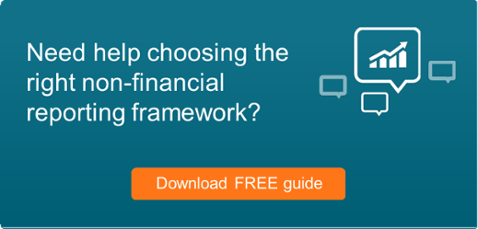EU Non-Financial Reporting Directive - how to prepare
 Back in December 2014, the European Commission introduced new legislation requiring certain companies to disclose relevant non-financial information, aptly titled the EU Non-Financial Reporting Directive (EU NFRD). Giving member states until the end of 2016 to enshrine the new directive into national law, the time has now come for large companies residing within the EU to report against the new directive, disclosing information relating to their 2017 financial year.
Back in December 2014, the European Commission introduced new legislation requiring certain companies to disclose relevant non-financial information, aptly titled the EU Non-Financial Reporting Directive (EU NFRD). Giving member states until the end of 2016 to enshrine the new directive into national law, the time has now come for large companies residing within the EU to report against the new directive, disclosing information relating to their 2017 financial year.
While businesses that have previously published non-financial information will be better placed to adapt to the new legislation, the breadth of information required may still necessitate a great deal of forward planning. This brief overview will look to provide direction for companies on how best to capture and report against the new directive.
Background
As of this year, the EU NFRD will be a legal requirement for companies with more than 500 employees who are deemed of ‘public-interest’ by the member state(s) in which they reside. This may vary from country to country as some member states elected to reduce the employee threshold when transposing the directive into national law. Information regarding member state implementation was published by GRI and is referenced below.
Applicable companies are obliged to report on a range of issues covering the Environment, Social Impacts, Human Rights and Anti-Corruption and Bribery. The report should also include a brief description of the business model, risks associated with the areas above and details of non-financial KPI’s. These areas aim to encapsulate current best practice and align with initiatives such as the UN Sustainable Development Goals (SDGs), Paris Climate Agreement and the Task-Force on Climate Related Financial Disclosures (TCFD). The intention is that the increased transparency within the private-sector will lead to more robust growth by encouraging businesses to adopt more sustainable practises, increasing trust among stakeholders.
Collecting the relevant information
A company’s preparation will be highly dependent on what information they already capture, as well the EU jurisdiction they fall into. However the process of evaluating what additional non-financial areas need to be collated remains the same. Organisations should initially examine which details of the disclosure are material to the business, before undertaking gap-analysis to determine which areas are not currently being reported on. Taking the UK as an example, companies should already be publishing information on human rights, gender diversity, business models and carbon emissions, meaning only anti-bribery and corruption will be an additional requirement.
There is no single method for collecting data and no standardised approach is given. While this flexibility can make the process confusing, it does allow companies to initially take a pared down approach while they figure out what methods need to be in place to collect data in later years.
The EU NFRD also requires companies to include how non-financial information is incorporated within their business models, risks and KPI’s. For some businesses this will require a major shift away from thinking of these elements purely in terms of financial outlook.
Preparing your report
Organisations are free to disclose non-financial information however they see fit, although most countries strongly encourage the use of well-established voluntary frameworks. Out of the frameworks GRI is seen as the most applicable, as it’s the most widely used and covers all the core aspects of the directive. GRI places a strong emphasis on materiality, and using the GRI Materiality Principle is a long standing method of assessing what influences the decisions of a company’s stakeholders.
Furthermore, to accurately assess the risks associated with a company’s activity they need to consider their value chain. GRI recognises this, asking organisations to report not only on their direct impacts but also, where appropriate, those that they contribute to via relationships with suppliers and customers. With EU NFRD’s emphasis on integrating sustainability into business strategy, GRI provides the ideal framework to assess a company’s influence and inform better decision making.
Greenstone and the EU NFRD
Here at Greenstone, we have mapped the EU Non-Financial Reporting Directive within our Enterprise solution to the GRI Standards. Due to the detailed and prescriptive nature of the GRI Standards, clients can use this mapping to easily identify the metrics and KPIs required for compliance with the new EU regulations, collect data from across the organisation and consolidate information into external reporting templates.
There is a number of other GRI-mapped frameworks available in the Greenstone Enterprise solution including ISO 26000, OECD Guidelines for Multinational Enterprises, the Sustainable Development Goals, UN Global Compact, UN Guiding Principles on Business and Human Rights and the UN Women’s Empowerment Principles.
References










